“The journey to Kailash did not happen all of a sudden. It was a long standing wish, was always afresh in my mind which eventually became an aspiration over the course of time,” said Dr. Vasuki proudly. She said that her grandmother's firm and unfaltering devotion to Lord Shiva instilled in her the dream to undertake this holy yaatra. “She used to sing ‘Shivapuranam’ and ‘Kailasanatha Potri’ daily when I would lay on her lap,” she added.
“One day, I shared my childhood wish of visiting Kailash with my husband and son. They instantly agreed to the idea. On enquiring at various places, we were told that if one wants to do a complete Parikrama, one will have to reach nearly 18,600 ft. above the mean sea level, which was not suggested for people above the age of 50. But all those numbers did not bother me. I said I am fit. All three of us mentally and physically prepared ourselves for the arduous and challenging mission. She jovially remarked, “Even though my husband’s name is Paramasivan, he didn't think about visiting Kailash before.”"
“There was a group in Coimbatore consisting of 40 people who wanted to visit Kailash. We joined them. As my husband was a doctor, the group was also doubly happy. The process of applying for Visa was quite complicated for Indian Nationals because the actual location of Kailash is in Chinese occupied Tibet. The route was to go through Nepal. Initially, we went to Katmandu , Capital of Nepal. The group who held British passport flew from Kathmandu and those who held Indian passport had to undergo few more procedures at Katmandu for more than 10 days. Despite the long procedures that we had to undergo; I enjoyed the sojourn at Katmandu. In fact, I was amazed to see many shrines of Lord Bhairava and Goddess Kali at the nook and corner of every street. The places to be seen there were the Pashupatinath Temple located in the bank of Bagmati River, the Guhiyeswari Temple (Shakthi Peedam) located adjacent to it, Jal Narayan Temple, Dakshin Kali temple and very many ancient temples. Almost every day of our stay we visited Pashupatinath, which I felt was an unexpected blessing showered by Lord Shiva."
“The specialty of Pashupatinath Temple lies in the fact that the main deity of Lord Shiva had five faces representing his different facets, Sadyojata, Vamadeva, Tatpurusha, Aghora, and Ishana, facing the five directions as well as the zenith. They also represent the Panchabhutas (earth, water, air, light, and ether). Finally, we got our visas cleared on the 10th day and flew back happily to Lhasa which is the capital of Tibet towards our mission.” We were enthralled to see the gorgeous and magnificent Annapoorna Range and the Mount Everest from the flight.
“True to the quote that the journey should be enjoyed more than the destination, we enjoyed having the panoramic sight of Mt. Everest, and the Annapoorna range on our way. These glimpses gave us joy, but our anticipation grew thinking about what we were about to witness. We stayed at Lhasa for three days to get acclimatized to the higher altitude.
“The people of Lhasa were so friendly and the moment they saw us they identified us as ‘Hindus’ (short form of Hindustan) to Indians. Lhasa was a strictly controlled Chinese Police State with electronic surveillance cameras fitted everywhere throughout the lanes. We also noticed many Buddhist monasteries all around Lhasa. The city of Lhasa housed the famous Potala Palace, the huge Buddhist Jokhnang Temple, and a host of other famous Buddhist Shrines. The vibrant and dynamic Barkhor Street housed a variety of shops that sold handicrafts and products which were uniquely Tibetan. There were many inscriptions carved in Pali language. We were now acclimatized to the higher altitudes to some extent."
“We had to travel about 1200 kms to reach Mt. Kailash from Lhasa and that trip had to be covered by bus. We enjoyed the three-day bus travel as the roads were well laid making the journey mesmerizing with scenic beauties all around on the banks of the River Brahmaputra. The Mystic mountains with embedded Buddhist monasteries and here and there a monk treading on the mountains made me question the meaning and purpose of a materialistic living. But on the contrary, to break this scene, for every hundred yards one can either notice Chinese flags or the posters of the Chinese leaders which were not appropriate for that location. For nearly 1000 kms on the side of the road, we noticed the wide Brahmaputra river and the impressive Himalayan Range with the ever increasing altitude. The gradual increase of altitude did not affect us because of the medication that we had undergone alongside. We felt a strong sense of spiritual confidence which was showered by Lord Shiva on us.
“When we undertake any divine yaatra, food was never a choice but necessity. Since we travelled during the month of July, it was easy because the temperature was tolerable."
"Enroute to Mount Kailash from Lahsa, we had to halt at two places namely Xigaze and Saga. On the third day, at 4 PM we reached Manasarovar and had the first sight of mount Kailash glistening with snow. The most awaited time had come, the entire group got more excited and even few got emotional out of sheer happiness.”
“But from the moment we had the first glimpse of mount Kailash, we travelled about 120 kms around Manasarovar lake in an ecofriendly bus and we collected the Punya Theertham. The landscape was barren, and it did not look so friendly. The population was very sparse which comprised of small encampments, a few Buddhist monks, smiling Tibetan people and the yaks. We were astounded to view the huge Manasarovar lake."
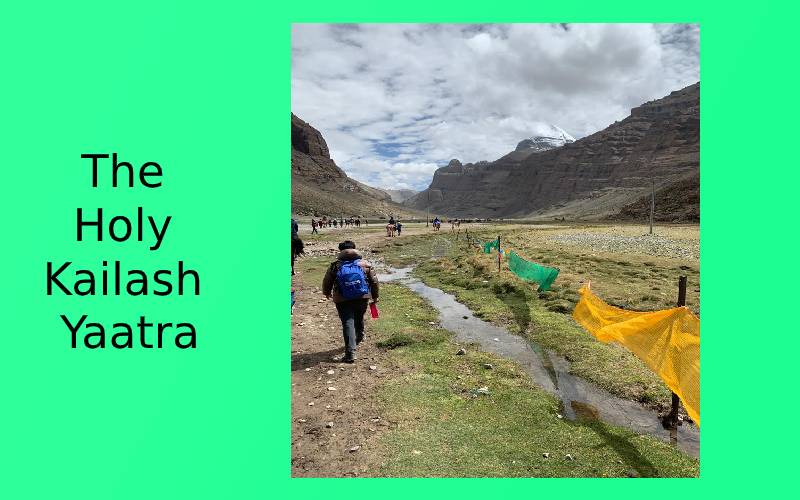
“The Manasarovar which literally means 'Manas' (Mind) and 'Sarovar' (a great lake). It was hard to believe what we saw! We were spellbound to see such a glorious fresh water lake. At times, we also wondered seeing such a cosmic lake which pretty much looked like an ocean, that too, at such great altitude. The bus took us around the lake. From there we traveled nearly half past an hour and reached a place, where on one side we witnessed the lake called ‘Rakshasthal’”.
The significance of Rakshathal was that the arrogant Ravana, after his victory over Kubera, his (stepbrother), was on his way to Kailash. Ravana was flying back on the Pushpaka Vimana which he had stolen from Kubera. The vimana could not pass through Mount Kailash as Nandi stopped and told him that his Lord and Mother Parvati were enjoying dalliance on the mountain and that no one could pass through the mountain at that time. Ravana mocked Lord Shiva and hence he was cursed by Nandi that monkeys would destroy him and his kingdom. Infuriated by the curse, Ravana tried to lift the Mount Kailash. Lord Shiva got angry and pressed him with His big toe. Ravana fell to the ground and cried for the first time. Ravana in Sanskrit means “loud Cry”. Later, he praised Lord Shiva through hymns for a thousand years, he was then forgiven and granted the invincible sword. His fall was historically known to people from the scar on the ground which later formed into a small lake. “No one touched that water as it was not considered sacred. The water in the Rakshasthal Lake looked still, lifeless and dark blue in color which gave the appearance of poison. While the Manasarovar Lake looked pleasing, breezy, with full of life and had waves."
"One more interesting thing was that we set foot at Manasarovar on a new moon day, which we now ecstatically feel that we were blessed by the Devatas. We were extremely excited gazing at the stars that we could notice in the bare night sky. The reflections of the stars were seen in the dark Manasarovar dazzling with beauty. That night we literally felt ‘Heaven on Earth’, no one could express the beauty which we witnessed. Few of our co-travelers also mentioned about the spiritual significance that it was the time when all devas used to come down and take a dip in the Manasarovar lake. What we saw there was only water all around and the sky filled with stars. It was pitch dark as there was no electricity after 8 PM. On the next day early morning, a homam was performed by the Nepali Priests in the bank of Manasarovar lake which looked much similar to what was performed in the South India."
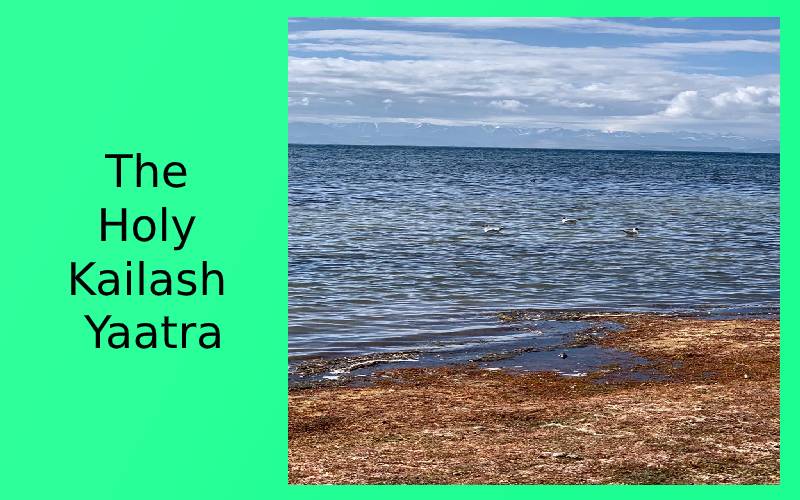
"We resumed our journey soon after that. Traveling for about 2 hours, watching the view of Kailash continuously, we reached Darchen and stayed there that night. We prepared ourselves for the Parikrama with a light packing of materials that would be required for our journey. After an hour’s travel we reached the point where the Parikarma started, which is the South face. Here we had to choose our Horse man, a porter and mule who would assist us in our Parikrama. The remaining 53 kms from our place of destination had to be reached alternatively in foot and by horse. My husband and myself availed that opportunity while my son went by foot.”
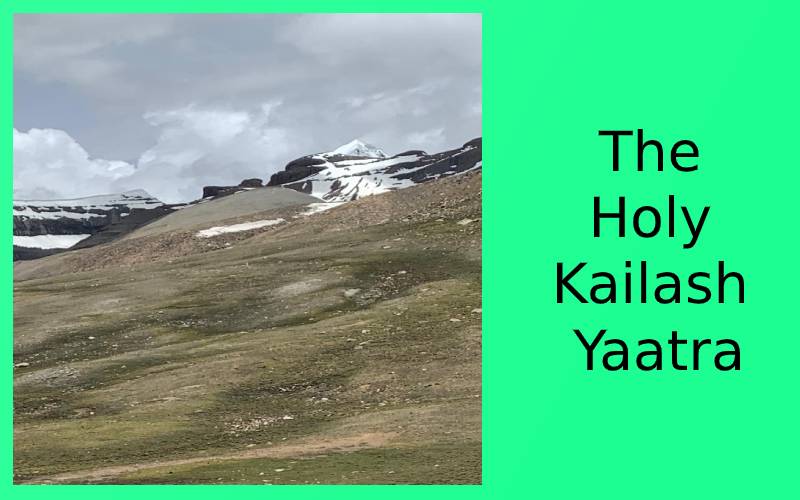
"We then entered a small dome from the Southern direction which was called the ‘Yamadwaar’. Crossing the Yamadwaar carried a meaning that we had completed one life and had entered the next. I felt excited to be at that place. We jovially exchanged dialogues that "my life is over, this is my second life, and by the way, who are you?”. We thoroughly enjoyed those moments.”
Dr. Vasuki jovially pointed out an instance, “After we crossed the Yamadwaar, I proudly spoke that I had a new life, forgetting the fact that our karma and its consequences still followed us. The proof was that when we asked the name of the person accompanying the horse with me, he said, ‘KARMA’. My husband laughed out loud reminded of my proud statements.”
“We only saw a river by our side and the whole place was rocky. We did not see any kind of vegetation around us. The only creature that existed there was Yak.”
“The first day of the Parikrama, we started in the South, then we came to West, and proceeded to North. The West face looked like Elephant head of Lord Ganesha. After travelling on horseback for nearly 12 kms we reached the North Face. The altitude of the place in the North was nearly 16,000 feet."
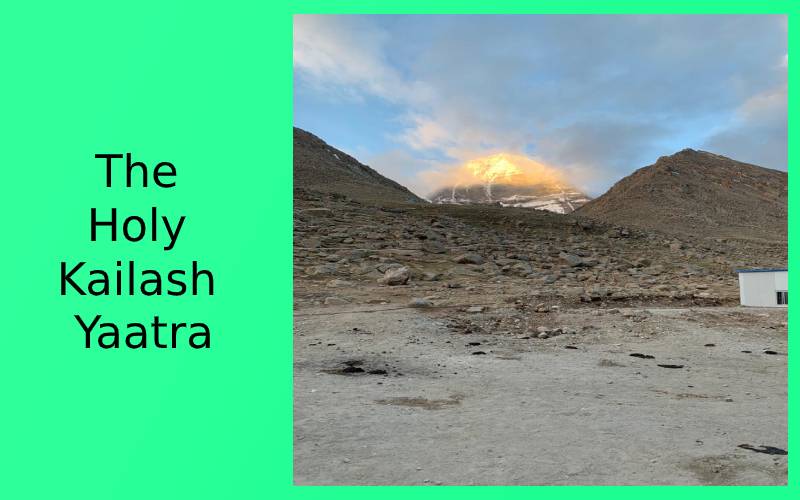
“The Northern face gave us the eye-captivating moment. As soon as we reached the North face, we were intrigued by the beauty of the location with an expectation to see the Golden appearance of the Mount Kailash. The next day when the early sun’s rays from East fell on the peak of the mount, it gave the golden appearance at the peak which was aptly called the ‘Ponnarmenian’ by ancient Tamil poets and saints described. We were really lucky to get the Darshan of Lord Shiva, the Ponnarmenian. This could have been one of the reasons behind why people of yesteryears visited Kailash and failed to make a return. Further the Siddhi powers enabled saints to travel across space and time and see this blissful appearance of Lord Shiva."
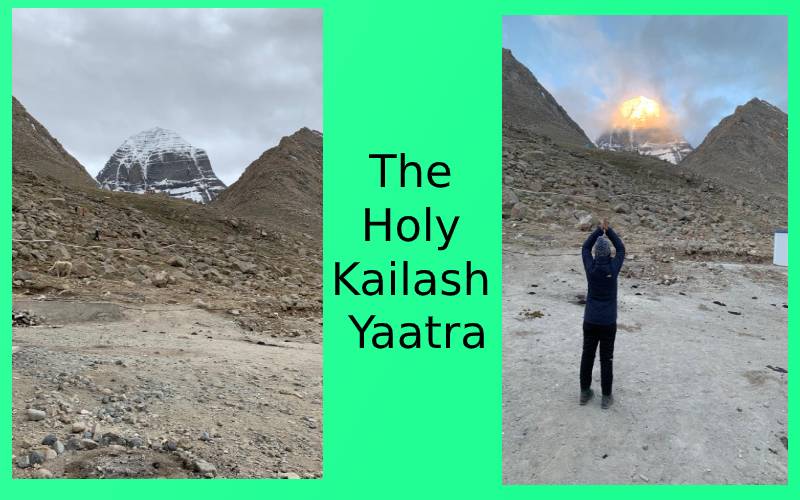
"The next day was the most challenging part of the Parikrama. We reached the Dolma pass where we had to be more careful because the horses had difficulty in climbing as it was a rocky, slippery, and icy terrain. As the horses could not carry the entire weight, we had to tread over frozen rivers by ourselves, which was quite dangerous and utmost care had to be taken while walking this stretch of 7 to 8 kms. The altitude in Dolma pass was 18750 feet and people were advised not to spend more time due to less oxygen. We even felt that we were in some other planet as the whole place was arid and rocky. The famous Gauri Kund was located there. It was one of the most beautiful places that I had ever been to. Historically, Gauri Kund was considered to be the birth place of Lord Ganesha.”
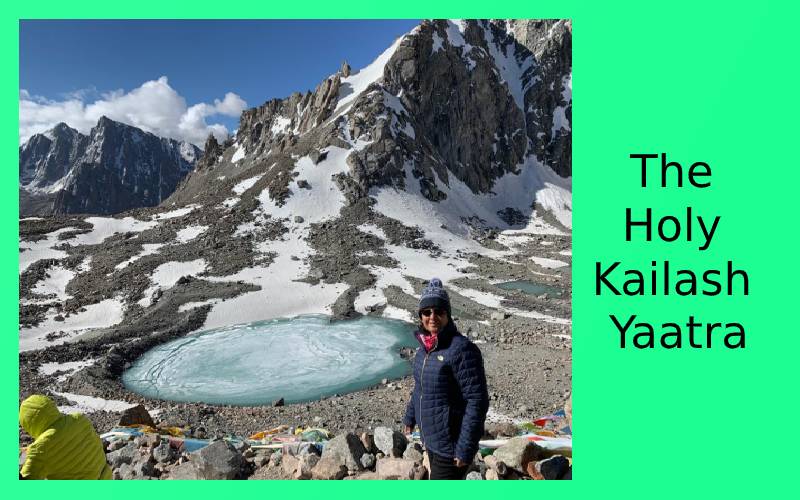
“We then proceeded to the Eastern face. The journey to the East was cumbersome with rough terrains and we had to descend through slippery, and slushy terrain too. At times, we were forced to glide on our bottoms since it was not possible to walk down the slope. The view of Nandi and the Mount Kailash was very unique and picturesque. It was around 10 kms downhill trek and we reached a monastery by noon. We stayed overnight at Juthulpuk monastery, a Buddhist monastery with very basic amenities."
"In Tamil literature, there are many songs written by Nayanmaars on Kailash, the abode of Lord Shiva. Great poets including Manikkavasagar, and Sundarar had sung in praise of Lord Shiva and Kailash. Even Kaaraikkaal Ammaiyaar wanted to visit Kailash but she couldn’t. Admired by her devotion the Lord himself made his presence in front of her at Thiruvalangadu near Chennai.”
"How could one leave Mount Kailash after the Parikrama - the holiest place on earth which is sacred for Hindus, Buddhist and Jains? Although we returned with heavy hearts, we had and continue to have a strong desire to perform our pilgrimage once again in our lifetime with the divine blessings of Lord Shiva."
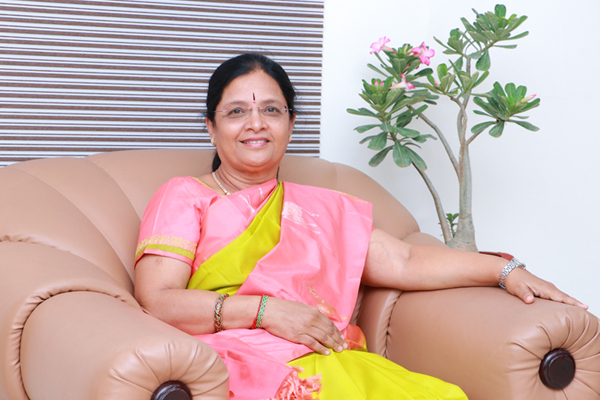
Dr. C. A. Vasuki is a University Gold Medalist and holds a master's degree in Life Sciences. She is the Secretary of Kongunadu Arts and Science College, Coimbatore. She is a selfless person and highly motivated with her goal of creating responsible citizens for the country.
NEXT ARTICLE

At the southernmost tip of this mesmerising ensemble lies the majestic Great Nicobar Island, boasting an impressive landmass of about 910 square kilom...

Bharath has always been a land traversed by spiritual masters/ Guru since time immemorial. These spiritual masters have always upheld the core princip...

South India contains its fair share of unique pilgrimage centres. These divine places of worship have a prominent Sthala Purana, devoted followers, di...